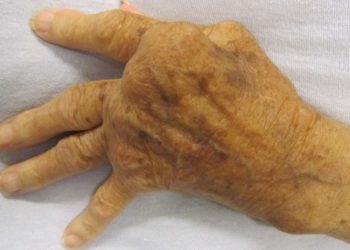Low-cost test rapidly detects Zika virus [PreClinical]
1. A paper-based, rapid, and inexpensive assay detected genetic components of Zika virus at concentrations akin to those in human saliva and serum.
2. Plasma samples from a viremic rhesus macaque infected with Zika virus were detected by the assay, demonstrating its suitability for clinical diagnosis.
Evidence Rating Level: 1 (Excellent)
Study Rundown: Zika virus, which was first isolated in Uganda and recently spread to the Americas, has precipitated a current global healthcare crisis. While affected individuals usually experience relatively mild symptoms and may not even realize they are infected, infection carries the risk of fetal microcephaly in affected pregnant women. This study presents a rapid, low-cost method for Zika virus detection which can easily be used in remote and low-resource locations.
The detection assay, designed to be freeze-dried and paper-based, contained programmable RNA molecules called toehold switches. Zika virus RNA activated the toehold switch to express a reporter gene, which produced the β-galactosidase (LacZ) enzyme. LacZ then catalyzed a color change from the yellow substrate on the paper to a purple one, which could be seen by eye. In contrast, RNA from the closely related Dengue virus did not cause a color change. Incorporating an isothermal RNA amplification step before the toehold reaction improved the sensitivity of the assay from the nanomolar range to the clinically relevant femtomolar range of Zika RNA. To further tailor the technology for field use, RNA extraction was performed by simply boiling samples, and a portable electronic reader was developed to quantitatively monitor assay color changes. The assay was validated using plasma from a viremic macaque infected with Zika virus.
In order to minimize cross-reactivity with similar viruses, other methods for Zika virus detection remain expensive and rely on expertise and technology which may not be available in the field. By contrast, the technology described here has the potential to be inexpensive ($0.10-$1/test), rapid (~3 hours) and easily used in low-resource areas, priming it for use in many locations particularly threatened by Zika virus.
Click to read the study in Cell
Relevant Reading: Zika Virus
In-Depth [in vitro study]: Detection of Zika virus RNA was based on a molecular technology called the toehold switch. A toehold RNA sequence was designed to be adjacent to the ribosome binding site of the reporter lacZ gene. These were both initially inaccessible inside a hairpin structure. The binding of the complementary Zika virus RNA to the toehold RNA sequence opened the hairpin, allowing for LacZ to be produced and change the substrate color.
A computer algorithm initially identified 24 regions of the Zika virus genome which were unique to Zika virus and amenable to the toehold switch technology. These sequences were each incorporated into two toehold switch sensor designs. Sensor reactivity, assessed as fold change in LacZ production rate, was measured by the slope of absorbance at 570 nm over time. Sensors showed as high as 34-fold reactivity to Zika virus RNA in the first 90 minutes of exposure compared to sensor alone. No significant reactivity was observed in response to Dengue virus RNA. An additional assay step used an isothermal RNA amplification method called nucleic acid sequence-based amplification (NASBA). Using this method, the assay sensitivity extended from the previously limited nanomolar range into the clinically relevant femtomolar range of starting Zika RNA material.
Further work focused on the assay’s suitability in the field. Boiling for one minute was shown to result in effective RNA extraction from serum samples, and an electronic reader was developed to more precisely monitor LacZ production. Finally, the technology was demonstrated to successfully detect 2.8 fM Zika virus from the plasma of an infected macaque, highlighting its potential for application to human samples.
Image: PD
©2016 2 Minute Medicine, Inc. All rights reserved. No works may be reproduced without expressed written consent from 2 Minute Medicine, Inc. Inquire about licensing here. No article should be construed as medical advice and is not intended as such by the authors or by 2 Minute Medicine, Inc.



![Nanoparticle delivery of aurora kinase inhibitor may improve tumor treatment [PreClinical]](https://www.2minutemedicine.com/wp-content/uploads/2016/02/20541_lores-350x250.jpg)


